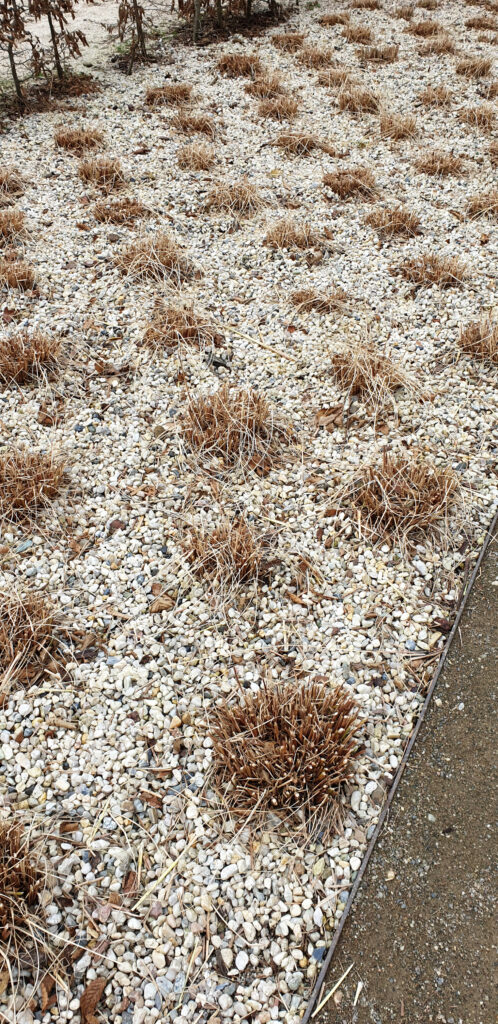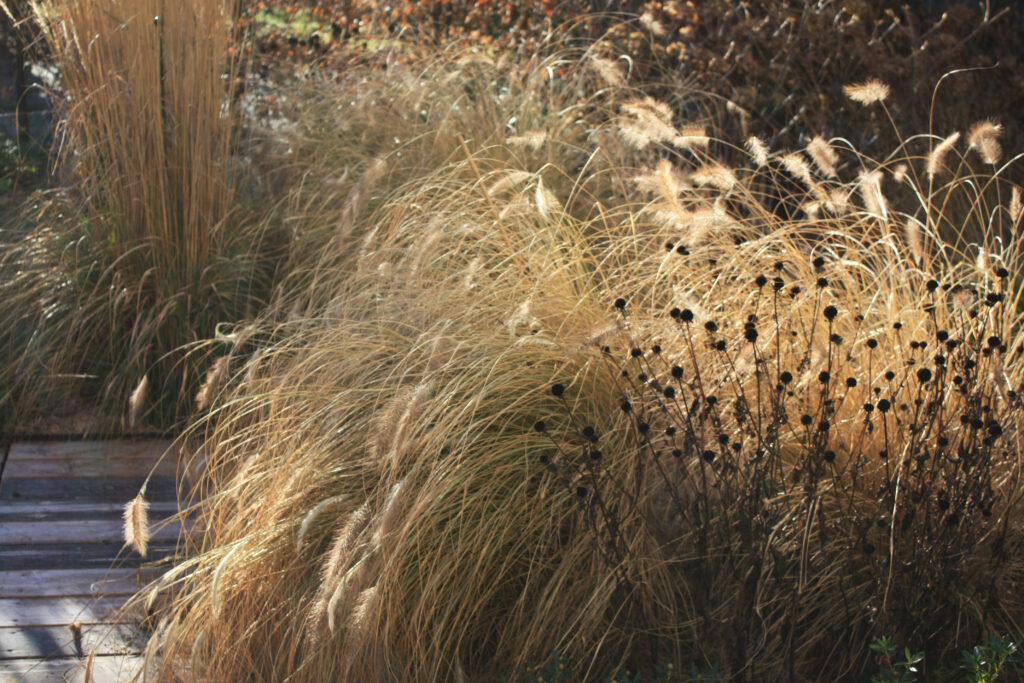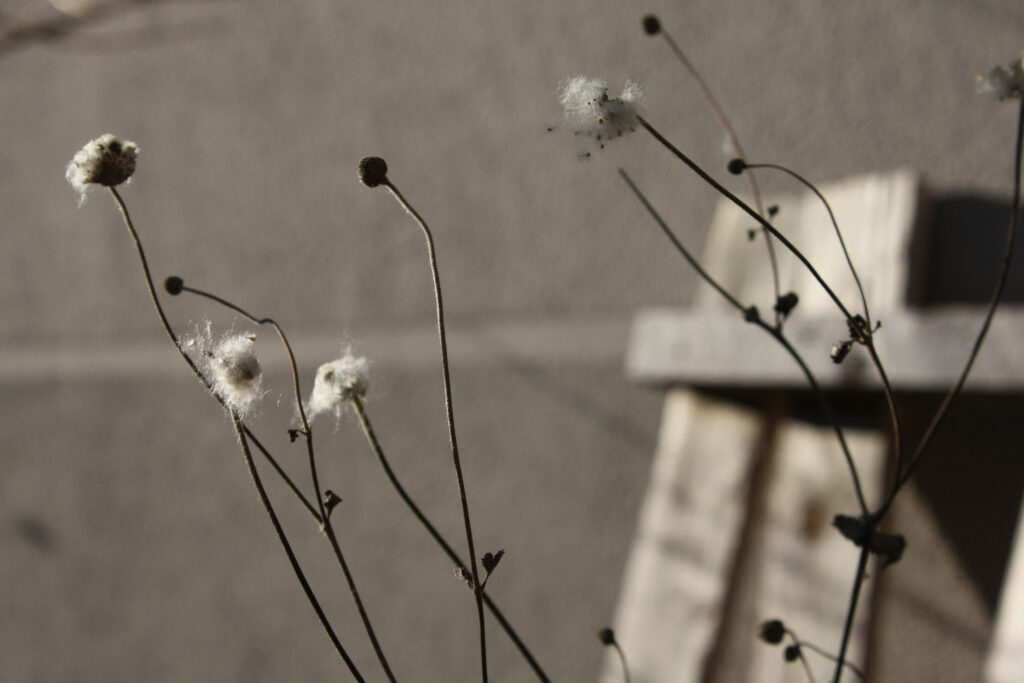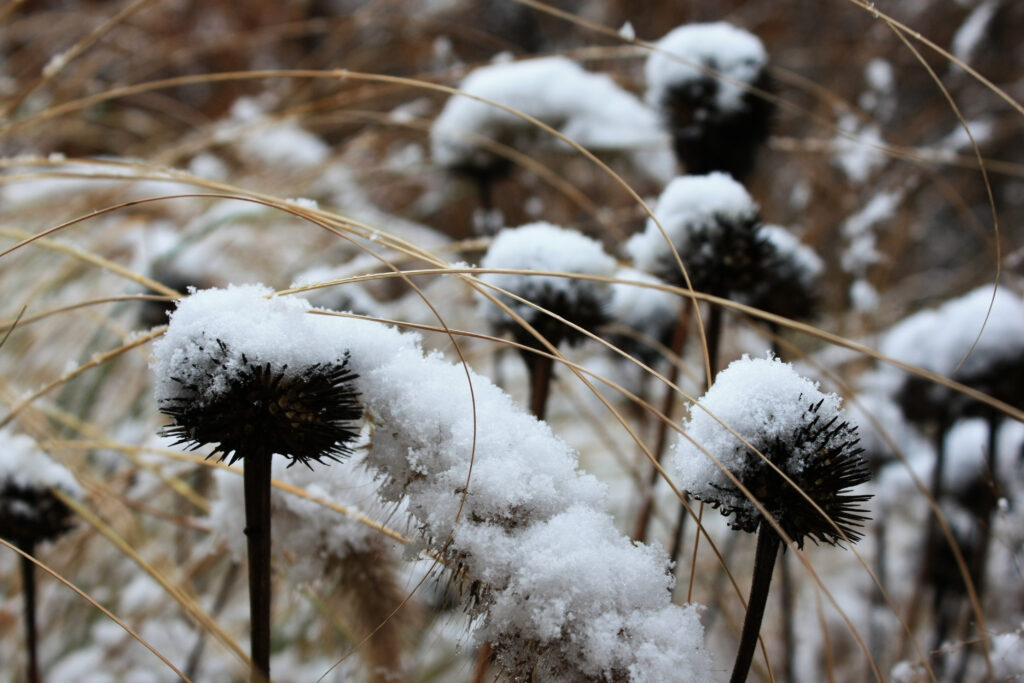A few weeks ago I hastily ripped open the package containing “Winter Gardens” by Montgomery Press, a book filled with stunning photographs of twelve gardens in winter by Andrew Montgomery, accompanied by interviews with their owners by Clare Foster. The excitement and liveliness with which I approached the said package seemed, however, a bit of odds with the content. Because a lot in Winter Gardens is about decay, death and pause. Muted colours, shabby dried stems, mess of fallen rotting foliage enliven by fleeting moments of light and frost and then almost tiring monochrome of black branches, deepest greens and browns. Yet, they still keep me in awe. The seasons and the ephemeral nature of every display in the garden are precisely what makes me excited about gardens, that resounds with my novelty seeking soul. And, simply, there is an undeniable fragile beauty in aforementioned stems, foliage and monotone palette.

“Plants can be beautiful in death as well” – Piet Oudolf
Piet Oudolf, who refined and reintroduced naturalistic planting style to the general public, is famous for saying “I like dead plants. But people don’t like dead plants”. And the second part of that statement brings me to the today’s rant.
“If you managed to design a garden that looks good in February and November, you nailed it”
Annie Guilfoyle, Garden Masterclass
As designers, we try to built strong backbone in the garden with harmonising shapes of hardscape elements and evergreen plants. We choose shrubs and trees with gracious winter silhouettes. We also fill the remaining space with soft grasses and perennial plants whose ragged dried stems keep structure throughout the cold season. It is these plants that weave the subtle tapestry of light and form you may appreciate in so many of Montgomery’s photographs. All for naught if a well-meaning maintenance team clears everything up at the end of October leaving empty ground for months to come. Every day, as I walk our dog through the neighbourhood, I shake my head at the sight of stumps of ornamental grasses cut to the ground where could be drifts of golden stems swaying in the wind. I have never managed to see the autumn colour of Gillenia trifoliata in communal beds because they are cleared on the schedule before the foliage gets a chance to turn red. In private gardens, my neighbours ferociously erase expired flowers filling in compost bins at the first frosty night. And I wonder why?


To cut or not to cut?
Clearing up the beds in preparation for spring indisputably brings a lot of satisfaction. For me it is both, catharsis of a job well-done, and sheer pleasure of neatness. But we have long winters here. I prefer to embrace the scruffiness and delay the cleanup for as long as possible. There are days when I look out thinking “Oh boy, it is really messy out there”. But there are also moments of “Oh, soo beautiful!”—the occasional ray of light trapped in grasses or snow topping Echinacea seedheads. How more satisfying and cheering up would be the alternative—the empty ground? I live in the middle of the city and I don’t have an opportunity for a countryside or forest walk every day. The scruffiness of my sleeping garden reminds me of the wilder landscapes out there, and brings me closer to nature day by day.
Winter plants for wildlife
There are also other aspects of leaving plants over winter in place than pure aesthetics: we can share a bit of our urbanised habitat with other creatures. Nourishing seeds and stems to perch on for birds, leaves and debris for invertebrates to feed on and hide within. (You are likely to appreciate a private stock of ladybirds when legion of aphids arrive with warm spring weather.) From the horticultural perspective, there is no reason to cut back the perennials in mid-autumn. On the contrary—withered foliage provides insulation and thus mitigates the temperature swings. Some of the herbaceous plants are short-lived and their presence in the garden relays on serendipitous seeding. When the stems are removed too early, the flowers have no chance to propagate. The organic material on top of the soil nourishes soil organisms and thus improves the soil structure. Bare ground doesn’t support us, nor does support the life around us.
When is the best time for tidying up?
From the artistic point of view, my answer would be “as late as possible”, but “possible” depends on several factors.
First, on the climate zone you are living in and then on a specific winter. A milder winter might be gentler on the structure of the remaining grasses and flower stems, so they might look better longer. However, it allows to vegetation period start earlier.
Second, on the species. Softer plants turn into ugly mush with the first frost (like Hosta), and need to be cut back even before winter. Nonetheless, there are many perennials and ornamental grasses which stand their posts irrespective of what the weather throws at them for the whole winter. Some plantsmen prefer to mow everything in one go. Others (to which I belong) clear the fallen plants as they lose charm successively throughout the winter. The best piece of advice I might give is to just look out and decide on-the-go rather than a fixed schedule.
Finally, and probably the most importantly, before the spring bulbs blossom. Late bulbs, such as tulips and some narcissi give more time to enjoy the winter display. Snow drops, crocuses, and winter aconites may sprout out even in the intermittent warm weather spell. Hence I plan the spring display with winter in mind. But that is another topic altogether for another time.



